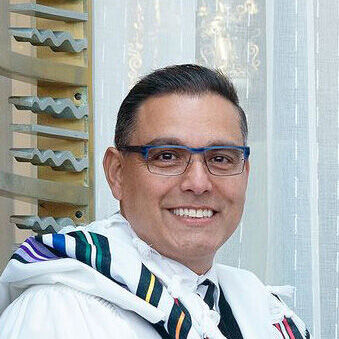‘The Purim, Pesach, Shavuot Vortex’ presents opportunity for spiritual growth
Published May 14, 2021
Once again, we find ourselves knee-deep in what we at our Shul affectionately refer to as “the Purim, Pesach, Shavuot Vortex.” This year, as we remain mired in the messiness of the pandemic, I have light-heartedly redubbed this intense time of the year the PPP – The Purim, Passover & Pentecost (the English term for Shavuot) Vortex.
In many ways, this PPP period resembles, in its intensity, the High Holidays, the Yamim Noraim, the Days of Awe. Thus, during this Covid crisis, we have all been digging deep to come up with the most creative and innovative ways to help our congregations remain spiritually connected despite being socially distanced.
One of the most efficacious ways in which we’ve endeavoured to achieve this important goal is to offer a myriad of different virtual classes, services, and social opportunities as well as trying-on some new ways of doing business; ways which we never would have, heretofore, imagined employing in a Shul.

In the spirit of working toward an ethos of ever-greater positive interconnectedness, I want to share a paradigm that sees each aspect of the abovementioned PPP, the vortex, as an opportunity for spiritual growth, deepening and transformation. And I want to ground this model in a powerful article penned by my teacher Yossi Klein Halevi of the Hartman Institute in Jerusalem.
In his musings, Yossi posits that there are what he calls Purim Jews and Pesach Jews. Purim Jews tend to be more hawkish and are motivated by a keen awareness of the threats of anti-Semitism and the abiding concern for Jewish survival. Passover Jews, on the other hand, are motivated by a more universalistic empathy with all those who are downtrodden and oppressed and are often categorized by the term dovish.
Of course, we know that both approaches are necessary for Judaism to flourish and Klein Halevi’s thesis thus challenges us to, “internalize or at least acknowledge each other’s anxieties (so that) the shrillness of much of American Jewish debate over Israel (and any other potentially divisive issue) will give way to a more nuanced conversation.”
What I find most fascinating about Yossi’s insightful analysis is that both Purim and Pesach Jews seem to arrive at their orientations from a place of discomfort and anxiety. The angst they feel, though familiar to many of us, feels at least to me a bit hollow and unproductive. What I seek is a religious orientation to the world that transcends fear, insecurity and dread. The older I become and the longer I serve congregations and communities, the more I am convinced that what people are seeking is not the “oys” of Judaism, but rather the “joys.” We want a reprieve from the hand-wringing, lamenting and “woe is me”-ism so often associated with Jewish living.
Fortunately, our cycle of Holy Days offers us just this kind of reprieve in the third of our P’s, Pentecost, Shavuot. You see, Shavuot is not about deliverance from evil tyrants, kings and Pharaohs, who wished to obliterate our people and eliminate our way of life. Rather, Shavuot is a time of the union between the Divine and the human. The mystics portrayed the epiphany at Mount Sinai as the marriage ceremony between the Holy One and God’s beloved, Am Yisrael. It was a moment of intimacy, love and profound sense that we are protected by an Ahavat Olam, an enduring love. The message for me, therefore, is that there is need for a 3rd type of Jew. We have plenty of Purim Jews, and an abundance of Pesach Jews and so what we need now is Shavuot Jews. Jews who live out their Yiddishkeit with far less anxiety, guilt and angst and far more love, positivity and joy. And friends, we can use the unique energy of the upcoming Festival of Shavuot to focus on what we need most – Joyous Jewish Living, Amen!
Rabbi Carnie Shalom Rose is The Rabbi Bernard Lipnick Senior Rabbinic Chair at Congregation B’nai Amoona.














